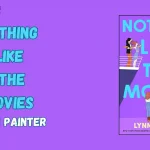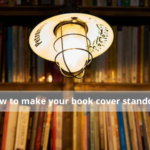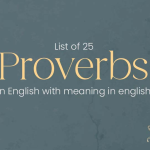What is Antithesis?
Antithesis is a literary and rhetorical device where two opposing ideas are placed in direct contrast, usually within the same sentence or clause, to highlight their difference.
It’s like seeing day and night collide in a sentence and trust me, it’s powerful. It not only sharpens your writing but makes your point hit harder.
Root of the Word “Antithesis”
The term “antithesis” comes from the Greek word antitithenai, which means “to oppose” or “to set against.” Fitting, right? This opposition isn’t just random, it’s intentionally structured to emphasize contrast.
Antithesis vs. Other Rhetorical Devices
Let’s not confuse it with oxymoron or juxtaposition.
- Oxymoron pairs contradictory terms: bittersweet, deafening silence.
- Juxtaposition places ideas side by side without direct grammatical opposition.
- Antithesis, however, presents opposing ideas in balanced structure.
Example: “It was the best of times, it was the worst of times.” That’s textbook antithesis.
You may also like: Tone vs Mood Explained: What’s the Real Difference?

The Power of Antithesis in Language
Why Antithesis Works
Antithesis works because it highlights contrast in a clear, memorable way, sharpening the impact of an idea.
By placing opposing concepts side by side like “give me liberty, or give me death”writers create a dramatic tension that captures attention and strengthens persuasion.
This rhetorical device appeals to logic and emotion simultaneously, making messages more striking and easier to remember. Its balanced structure also adds rhythm and clarity, enhancing both spoken and written expression.
How It Enhances Clarity and Impact
Antithesis enhances clarity and impact by presenting opposing ideas in a balanced structure, making complex concepts easier to understand.
This contrast draws the reader’s or listener’s attention, highlighting differences sharply and memorably. For example, in “Give me liberty, or give me death,” the stark opposition intensifies the emotional weight of the message.
Such phrasing not only clarifies the stakes but also leaves a lasting impression, making the communication more persuasive and rhetorically powerful.
You may also like: Tone Examples in Literature: 15 Must-Know Types With Examples
Antithesis in Literature
Famous Examples from Classic Texts
Let’s dig into some literary gold.
Shakespeare and Antithesis
Shakespeare loved contrast. In Julius Caesar, he wrote:
“Not that I loved Caesar less, but that I loved Rome more.”
See the opposing ideas? Caesar vs. Rome. Personal affection vs. patriotic duty. Boom antithesis.
Dickens’ Iconic Openers
From A Tale of Two Cities:
“It was the best of times, it was the worst of times…”
You probably finished that line in your head. Why? Because it sticks thanks to antithesis.
Antithesis in Poetry
Poets love antithesis because it delivers emotion and logic side-by-side.
Take Alexander Pope’s line:
“To err is human; to forgive, divine.”
Opposites again, presented with poetic symmetry.
You may also like: Shatter Me Series in Order: Don’t Read Them Out of Turn!
Antithesis in Everyday Speech
Commonly Used Phrases
Even outside of books, we use antithesis all the time.
Examples:
- “Give me liberty, or give me death.”
- “That’s one small step for man, one giant leap for mankind.”
These pack a punch because of their stark contrast.
Politicians love antithesis. Why? It makes slogans and points more persuasive.
Think of John F. Kennedy:
“Ask not what your country can do for you – ask what you can do for your country.”
It sounds profound and it is but structurally, it’s just a smart use of antithesis.
You may also like: How to Publish My Book | Self Publish Your Book | BlueRoseOne
Antithesis in Writing Styles
Persuasive Writing
In persuasive writing, antithesis is an effective rhetorical tactic for strengthening arguments and influencing the reader.
By juxtaposing opposing ideas for example, “We must learn to live together as brothers or perish together as fools” writers generate a powerful impact that emphasizes the stakes or moral differences involved.
This strategy clarifies complex subjects and appeals to reasoning and emotion, making the writer’s position more convincing, especially in speeches, opinion pieces, and argumentative essays.
Creative Writing
In creative writing, antithesis enhances emotional impact and dramatic effect by juxtaposing opposing ideas within sentences or scenes. This technique is widely used in poetry, fiction, and screenwriting to create contrast, highlight inner conflict, or deliver powerful dialogue.
For instance, Charles Dickens’ famous line, “It was the best of times, it was the worst of times,” uses antithesis to emphasize societal extremes. Writers often rely on such contrasts to engage readers and deepen the thematic resonance of their work.
You may also like: Realistic Fiction: Definition, Key Elements and Examples
Academic and Analytical Writing
In academic and analytical writing, antithesis is often used to highlight contrasting arguments, ideas, or perspectives to strengthen critical thinking and clarity.
Writers use this stylistic device to present balanced viewpoints, as seen in thesis-antithesis-synthesis structures. For instance, a research paper might contrast two opposing theories to emphasize the validity of a new perspective.
This strategic contrast helps readers engage with complex issues more deeply and enhances the logical structure of the argument or analysis.
Example:
“While capitalism promotes individual success, socialism emphasizes collective welfare.”
How to Identify Antithesis
Key Clues to Look For
- Opposing ideas in one sentence
- Balanced grammar (often parallel structure)
- Clear emotional or intellectual contrast
You may also like: Throne of Glass Series: The Right Order to Read
Antithesis vs. Juxtaposition vs. Oxymoron
| Device | Example | Difference |
|---|---|---|
| Antithesis | “Speech is silver, silence is golden.” | Direct opposites in structure |
| Juxtaposition | A happy child in a war zone | Contrast by placement |
| Oxymoron | “Living dead” | Contradictory terms side by side |
Writing Antithesis Like a Pro
Step-by-Step Guide
Identify the key message or theme
Find two contrasting ideas that relate to it
Use parallel structure to present both
Keep it concise and punchy
Use it strategically — don’t overdo it
Do’s and Don’ts
Do:
Use antithesis for emphasis
Keep grammar parallel
Stay contextually relevant
Don't:
Use it for the sake of flair
Mix up structure
Overload your writing with too many
When Not to Use Antithesis
While antithesis can add depth and drama to writing, it should be used selectively. Avoid using antithesis when clarity is more important than contrast, especially in technical or academic writing where straightforward communication is key.
Overuse of antithesis can also make the writing seem overly stylized or artificial, distracting from the core message. Additionally, in emotionally sensitive or nuanced discussions, stark oppositions may oversimplify complex issues or create unintended bias.
Writers should steer clear of antithesis when the opposing ideas are not truly parallel or balanced, as forced contrasts can weaken the impact and confuse the reader. In persuasive writing, using antithesis without solid logic may come across as manipulative.
Ultimately, antithesis is most effective when it enhances meaning not when it disrupts tone or clarity.
You may also read: Additionally Synonyms and Antonyms for Students & Writers
Conclusion
Antithesis is more than a stylistic trick, it’s a strategic weapon for clarity, persuasion, and drama. From Shakespeare’s plays to presidential speeches, this timeless technique makes ideas shine brighter by casting them against their shadows.
Whether you’re a writer, speaker, or just a language lover, mastering antithesis can give your words a whole new edge.
Frequently asked questions
Juxtaposition is placing ideas side-by-side for contrast, while antithesis uses direct, often grammatical opposition.
Absolutely! In fact, it’s one of poetry’s favorite devices. It enhances rhythm and deepens meaning.
















